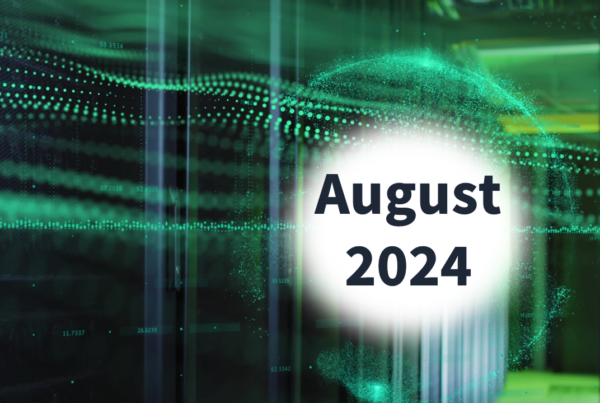
Customer Analytics will help utilities provide better service and identify new opportunities, but not without adopting a new perspective on customers.
From the 13th century until the early 19th century, roughly 600 years, people connected pieces of paper by threading ribbon through two incisions in the upper left corner. Then in 1899, a Norwegian inventor named Johan Vaaler conceived the paperclip. It was simple, but this invention, like so many of those taking shape today, simplified lives by offering a more convenient option for achieving a specific goal.
When it comes to the long-term viability of companies, making improvements to the customer experience is the critical goal at hand. Leveraging customer data and analytics to achieve this goal is proving to be the “invention” of choice.
Some utilities are using predictive analytics to target customers for specific marketing programs and others are analyzing distribution and consumption patterns to match the supply and demand more precisely. Examples like these are growing in breadth and depth.
Given the wide variety of technology systems and software platforms driving customer analytics and business intelligence, companies are spoilt for choice, and there is a temptation among decision-makers to focus on the “what”, instead of the “why”. “Let’s identify what systems we have or what systems we need based on technology and features,” is a common segue when businesses are focused on innovating the customer experience through data analytics.
A Customer Centric Approach
Leading CEO’s like the late Steve Jobs suggest another approach, focusing on the need. “You’ve got to start with the customer experience and work backwards to the technology. You can’t start with the technology and try to figure out where you’re going to sell it,” he said.
Customer behavior is constantly evolving. Some customers don’t want to be approached until their moment of need, and some don’t even know what they want. Amidst all these rapidly changing customer expectations, finding out what they need may seem like a tall order, but it doesn’t have to be. Here are three suggestions to prepare yourself for customer conversations:
- Prioritize current customers, first. According to DestinationCRM.com, the average business loses 10% of its customers each year. Reducing customer churn by 5% can boost profits by 25 -125%. Additionally, it’s common knowledge that referral customers act as valuable brand ambassadors, convert more, close faster, have a higher CLV than others. According to the Wharton School of Business, the lifetime value for a referral customer is 16% higher than non-referrals. With all of this data pointing to the importance of retaining current customers, there is a good argument for starting with perfecting their experience before focusing on future customers.
- Shift your Focus from Customer Service to Customer Experience. There have been many discussions (and arguments) around customer service versus customer experience. Essentially, customer service is what a company provides when a customer is in a moment of need. Answering questions about a product or services, addressing a compliant and fulfilling and order are three examples. Customer experience, on the other hand, encompasses a customer’s total experience with a company across all touchpoints. It includes “active” opportunities, like calling for support or using an online portal, and more passive interactions like viewing an ad in a magazine or a social media post.
- Create a Customer Journey Map. Understanding your customers’ journey—or the full lifecycle of the customer with regards to your company—is imperative to initiating conversations with them to learn how to improve the business. For current customers, it starts with identifying customer-related goals and documenting personas across segments. A customer persona is a semi-fictional representation of your ideal customer and should include demographics, behavior patterns, motivations, and desired outcomes.
Identifying triggers that set customers on new paths to engage with your company is the next step. Did they read an article by someone at your company that led to an action? Did they talk with you at a trade show about new opportunities? Once you identify your customer’s triggers by persona, you need to learn what they did next. Did they visit your website or email you? Did they ask a question on social media?
It’s also important to answer questions around how the channels seem to be working. Are customers dropping out of the journey at certain points? Did their account representative answer their inquiry promptly? Multi-Channel Funnel reports and Google Analytics are tools that help companies better understand a customer’s succession of actions and the results.
Understanding how and where they made a new purchase is the final step as shown in Figure 1. It is important to know what led them to make a new purchase.
Figure 1

The Importance of Integration
When analyzing the customer journey, it is important to assess how well your company is doing at integrating departments, channels, touchpoints and campaigns. Des Cahill, head of Customer Experience for Oracle, says that marketing, sales, commerce and service have traditionally done a good job (separately), but the customer wants to be treated as one person regardless of how they engage.
Call for Customer Data Analytics Stories
“Necessity is the mother of invention” is an English-language proverb. It means that the primary driving force for most new inventions is need. While there are many interesting inventions coming from the field of customer data analytics, those that start with the needs of customers and ultimately help a company reach its customer experience goals, are the ones we will feature in this series: “Customer Data Analytics: Inventing on Behalf of your Customers”. If you are a utility company or vendor with a case study to share, please email vedmonds@apposadvisors.com during the month of February.
Suggested Reading
Ask utilities about their data
Vanessa Edmonds is an experienced go-to-market advisor who helps clients build brands and win new business through an integrated approach to business strategy, marketing, and sales enablement.
A key driver of her success is her knowledge of technology and innovative concepts. She has an innate and ability to define the value proposition of technical products and services and reach non-technical business audiences with the right messages in their time of need.
Vanessa’s utility industry expertise spans twelve years. She has been published by several organizations including the Utility Analytics Institute, BBC, Electric Power Research Institute, CIO Review and the Utility Analytics Institute.














